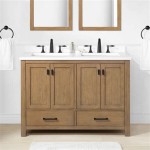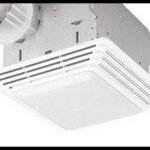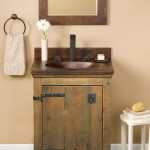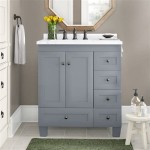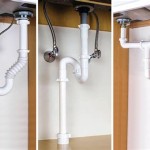Bathroom Sinks That Sit On Top Of Countertop: A Comprehensive Guide
Bathroom design has evolved significantly, with a greater emphasis on aesthetics and functionality. One element that has gained considerable popularity is the countertop-mounted bathroom sink, also known as a vessel sink. These sinks, rather than being recessed or undermounted, sit directly on top of the countertop, creating a visually appealing and often space-saving solution. This article explores the various aspects of bathroom sinks that sit on top of countertops, covering their types, advantages, disadvantages, installation considerations, material options, and design styles.
Types of Countertop Mounted Sinks
Countertop-mounted sinks offer a wide variety of design possibilities. One major distinction between types lies in their overall shape, which can significantly impact the look and feel of the bathroom. Common shapes include round, square, rectangular, oval, and asymmetrical.
Round Vessel Sinks: These sinks offer a softer, more organic appearance. Their circular shape can contribute to a more relaxed and flowing design, especially when paired with curved faucets and accessories. Round sinks are often suitable for smaller bathrooms, as their shape can help to maximize usable countertop space.
Square Vessel Sinks: Square sinks provide a more modern and structured aesthetic. Their sharp lines and geometric form contribute to a clean and contemporary design. Square sinks often pair well with minimalist faucets and accessories. They can be a particularly strong design feature in bathrooms with a focus on symmetry and order.
Rectangular Vessel Sinks: Similar to square sinks, rectangular vessel sinks offer a modern look, but their elongated shape can provide a larger basin area. This can be advantageous for those who require more space for washing. Rectangular sinks can work well in both small and large bathrooms, depending on their specific dimensions.
Oval Vessel Sinks: Oval sinks provide a compromise between the soft curves of round sinks and the more structured lines of rectangular sinks. Their elongated, curved shape offers a balance of style and functionality. Oval sinks are a versatile option, suitable for a variety of bathroom designs.
Asymmetrical Vessel Sinks: These sinks offer a more unique and artistic look. Their irregular shapes can create a focal point in the bathroom, adding visual interest and personality. Asymmetrical sinks are often chosen for their ability to break up the visual monotony of a more conventional bathroom design.
Another differentiation is whether the sink has an integrated overflow. An overflow prevents the sink from overfilling, which is especially important in bathrooms used by children or those prone to leaving the water running. These are commonly positioned near the top edge of the sink on the inside of the basin. Sinks without overflows typically rely solely on the diligence of the user to prevent flooding.
Furthermore, the type of drain mechanism provided can also be varied. Some sinks are supplied with a standard pop-up drain, while others may use a grid drain or other specialty mechanism. The choice of drain can influence both the aesthetic and the functionality of the sink.
Advantages of Countertop Mounted Sinks
The popularity of countertop-mounted sinks stems from several key advantages. These benefits range from aesthetic appeal to practical functionality.
Aesthetic Versatility: Countertop-mounted sinks come in a vast array of styles, materials, and colors. This allows for a high degree of design flexibility, making it possible to create a bathroom that reflects individual tastes and preferences. From sleek modern designs to more rustic and traditional styles, there is a countertop-mounted sink to suit virtually any aesthetic.
Ease of Installation: In many cases, installing a countertop-mounted sink is simpler than installing an undermount or recessed sink. The primary requirement is a correctly sized hole in the countertop for the drain. The sink is then typically sealed to the countertop with silicone caulk to prevent water leakage. In contrast, undermount and recessed sinks require more complex mounting methods and more precise countertop cutouts.
Space Saving Potential: Because the sink sits on top of the countertop, it can potentially free up space within the vanity cabinet below. This extra space can be used for storage of toiletries, towels, or other bathroom essentials. This is particularly advantageous in smaller bathrooms where maximizing storage space is a priority.
Height Customization: By choosing a higher or lower sink, the overall bowl height can be customized. This can be extremely helpful for accommodating individuals of different heights and addressing ergonomic needs. This is generally not possible with undermount sinks, where the rim of the sink is flush with the surface of the vanity.
Disadvantages of Countertop Mounted Sinks
While countertop-mounted sinks offer numerous advantages, there are also some potential drawbacks that should be considered.
Countertop Maintenance: With a vessel sink, there is a seam or edge where it meets the countertop. This area can be prone to accumulating soap scum, mildew, and other debris, requiring frequent cleaning to maintain a hygienic surface. This risk is exacerbated if the sink and countertop are not properly sealed or if porous materials are used.
Spillage Concerns: Due to the height of the sink above the countertop, there is a greater risk of water splashing outside the basin during use. This can necessitate more frequent wiping of the countertop and surrounding areas. This is especially relevant for households with children who may be less careful when using the sink.
Potential Instability: Depending on the design and material of the sink, and the way in which it is attached to the countertop, there is a potential for the sink to be less stable than an undermount or recessed sink. This is particularly true for sinks made of lighter materials or those with a small base. Careful attention must be paid to the installation to ensure that the sink is securely mounted.
Faucet Compatibility: The raised height of a countertop-mounted sink often requires the use of a taller faucet or a wall-mounted faucet. This can limit the selection of compatible faucets and may increase the overall cost of the bathroom remodel. Standard-height faucets may not reach adequately over the rim of the sink, leading to an awkward and less functional design.
Installation Considerations
Proper installation is crucial for ensuring the functionality and longevity of a countertop-mounted sink. Several factors must be considered during the installation process.
Countertop Preparation: The countertop must be level and stable to provide a solid base for the sink. The hole for the drain must be precisely cut to the correct size and location. Edges around the cut-out hole should be carefully finished to prevent chipping or cracking.
Sink Placement: The sink should be positioned carefully on the countertop to ensure that it is centered and aligned properly. Consider the placement of the faucet and other accessories when determining the final position of the sink.
Sealing: A high-quality silicone caulk should be used to seal the sink to the countertop. This will prevent water from seeping between the sink and the countertop, which can lead to water damage and mold growth. Ensure the caulk is applied evenly and smoothly for a professional finish.
Drain Assembly: The drain assembly must be properly installed and tightened to prevent leaks. Be sure to use plumber's putty or thread sealant on the drain threads to ensure a watertight seal. Check for leaks after the installation is complete by running water into the sink.
Faucet Installation: The faucet must be installed in accordance with the manufacturer's instructions. Ensure that the water supply lines are properly connected and that there are no leaks. Test the faucet functionality and adjust as needed.
Material Options
Countertop-mounted sinks are available in a wide range of materials, each with its own unique aesthetic and performance characteristics.
Ceramic: Ceramic is a popular choice for bathroom sinks due to its durability, resistance to staining, and ease of cleaning. Ceramic sinks are available in a variety of colors and styles, making them a versatile option for any bathroom design. Ceramic also resists scratches and fading.
Glass: Glass sinks offer a modern and elegant look. They are available in a variety of colors, textures, and shapes. Glass sinks can be made from tempered glass for added durability, and cleaning is typically straightforward. However, glass sinks are more prone to chipping and scratching than ceramic sinks.
Stone: Stone sinks, such as marble, granite, and travertine, offer a luxurious and natural aesthetic. Stone sinks are durable and can add a touch of sophistication to any bathroom. However, stone sinks can be more porous than other materials and may require sealing to prevent staining.
Metal: Metal sinks, such as stainless steel, copper, and bronze, offer a modern and industrial look. Metal sinks are durable, hygienic, and easy to clean. They can also be resistant to stains and corrosion. However, some metal sinks can be noisy and may show water spots.
Concrete: Concrete sinks offer a unique and industrial aesthetic. Concrete sinks are durable and can be customized with various colors and finishes. However, concrete sinks are heavy and can be porous, requiring sealing to prevent staining.
Design Styles
Countertop-mounted sinks can be incorporated into a variety of bathroom design styles, ranging from modern to traditional.
Modern: In modern bathrooms, countertop-mounted sinks are often paired with sleek, minimalist countertops and faucets. Common materials include glass, stainless steel, and ceramic with clean lines.
Traditional: In traditional bathrooms, countertop-mounted sinks are often paired with ornate countertops and faucets. Common materials include marble, granite, and ceramic with classic designs.
Rustic: In rustic bathrooms, countertop-mounted sinks are often paired with reclaimed wood countertops and farmhouse-style faucets. Common materials include stone, copper, and concrete.
Eclectic: In eclectic bathrooms, countertop-mounted sinks are used as a way to add a unique and personal touch to the space. Any material or style can be used, depending on individual preferences.

Pros Cons Of A Vessel Sink

Vigo Glass Round Vessel Bathroom Sink In Oceania Blue With Linus Faucet And Pop Up Drain Brushed Nickel Vgt549 The Home Depot

Vidaxl Wash Basin Vanity Sink Countertop Natural River Stone Oval Industrial Bathroom Sinks By Vida Xl International B V Houzz In 2024 Waschbecken Rustikale Unterschrank

Onyx Stone Bathroom Vessel Sink Marble And Hand Basin

16 Amazing Ideas For Countertop Bathroom Basins Basin

Ceramic Unique W B Wash Basin Bathroom Vessel Sink Above In 2024 Countertop

Butcher Block Countertops And Sinks For Bathroom Diy Projects Hardwood Reflections

How To Choose The Right Bathroom Sink

What Is The Standard Bathroom Vanity Height Size Guide

15 Best Bathroom Countertop Ideas Sink Storage And Vanity
Related Posts
